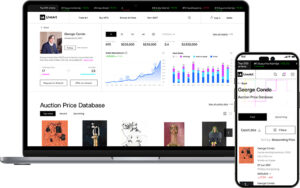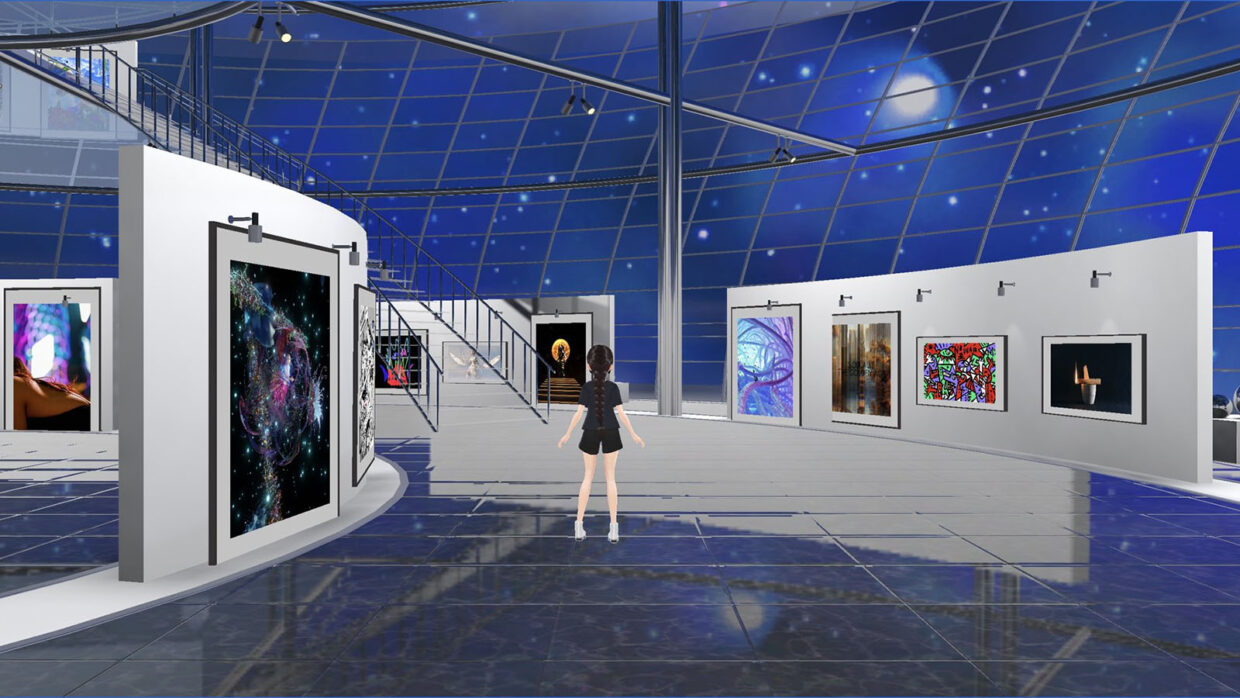On August 24, NFT trading platform LiveArt announced the 30 winning artists of its LiveArtX Global 100 competition, which asked participants to submit digital art on the theme of “Digital Renaissance.” The winners included artists Karina Abramova, Tope Ajayi, and Kimbol, who were picked by a panel of art professionals and LiveArtX and Binance community members. The winning entries are featured in a LiveArtX gallery in SecondLive, with their creators benefiting from exposure and sales.
According to Marisa Kayyem, Chief Curator at LiveArt, this year’s artist submissions reflect how NFT art has matured over the past few years. “I think about the range of works that could function in some ways,” she says, noting that this year’s submissions included PFPs, illustrations, and videos. “I think what unified [the submissions] is the diversity of styles that can be represented with creative digital tools.”

LiveArt aims to onboard traditional collectors, offering a decentralized platform to trade art and NFT collections for sale. Image: LiveArt
Co-Founded by John Auerbach, Adam Chinn, and Boris Pevzner, LiveArt is a self-described “Web3 platform” aimed at onboarding collectors with familiarity in the fine art world (Chinn was a former COO at Sotheby’s and Kayyem Director of Education at Christie’s). In addition to offering NFT and digital art on its platform, LiveArt also helps institutions create their own Web3 platforms through its white label NFT platform services — former clients include ICA Miami.
Still, appealing to traditional collectors and heritage cultural organizations remains an uphill task. Both Chinn and Pevzner reflect on the skepticism and hesitancy toward the new technology. “People were [hesitant] in the mid-90s about the internet,” says Chinn. “I say somewhat facetiously that blockchain is the most important thing to happen to the art market since the invention of oil paint.” He says that issues concerning title provenance, rights management, and resale royalties could fundamentally change the art business, and the entire ecosystem, from museums to advisors, will be impacted by blockchain technology.
For more on how Web3 is moving the art market, we spoke to the LiveArt team about the current environment for digital collecting and what it bodes for museums.
How do you see Web3’s role in the art market?
Pevzner: Web3 is disrupting art markets as a whole. It’s not just digital versus physical; it’s about making fundamental changes to market dynamics — more and more power is flowing toward creators and away from the intermediaries.

The winning entries of the 2022 LiveArtX Global 100 competition encompassed a diversity of styles and mediums from videos to generative art. Image: Karina Abrimova, “Tulum Las Palmas Doradas” (detail), 2022 / LiveArtX
What have you noticed about what collectors look for in digital works?
Kayyem: Like in the [traditional] art world, different collectors are interested in different things. And this relates to the maturity of the [NFT] marketplace. We have some collectors interested in artists in particular and want a piece of that artist in some form, whether digital or physical. We also have people that want NFTs because they’re interested in what the blockchain can provide, whether it’s utility or being engaged with a community and an artist over the long term. I don’t want to make universal statements because I think the exciting thing about this time is that there isn’t just one type of collector, and we see people wanting to collect for a variety of reasons.
What can the museum industry expect in the long term regarding Web3?
Kayyem: I think in places like museums, there’s a real distinction between real-life experience and digital experience. And what blockchain does is allow them to engage and expand their community, which is the mission of many museums. So the interest for [museums] ranges from expanding museum participants and the community around the local museums to having alternative opportunities like fundraising, education, and community reach.

In September, LiveArt will host the drop of Huang Yuxing’s first generative NFT project — in line with the platform’s appeal to traditional collectors. Image: Liveart.io
What roles do museums play in the digital art market, and what will these roles look like as Web3 develops in the future?
Kayyem: [Museums] are a validator; [museums acquiring NFTs] is a statement that these artworks and their value to culture are lasting.
Pevzner: Web3 may also open up completely different museum business models in a more futuristic vein. For instance, it’s already happening with tokenization and fractionalization of physical art, and those [fractional] shares then get sold to audiences who would never consider buying art before. And when a token holder who owns a fraction of the artwork comes to the museum, people get their QR codes, and you essentially get a community-owned museum. So it’s a new model that did not exist before. And that’s something that I wouldn’t even say the future holds. It’s happening now.



